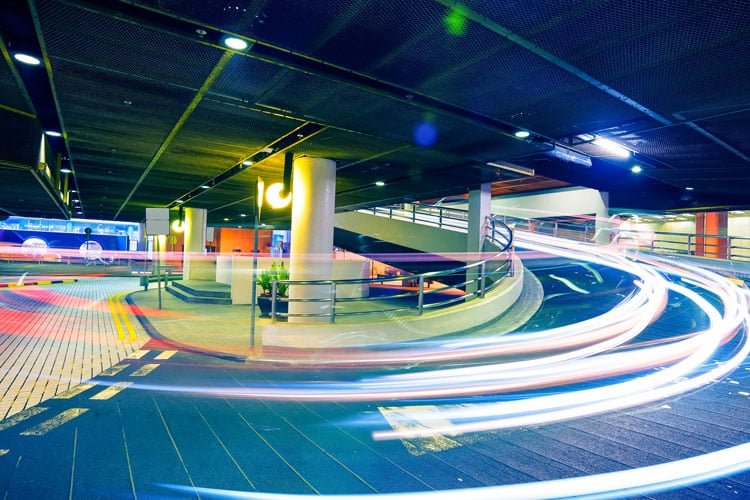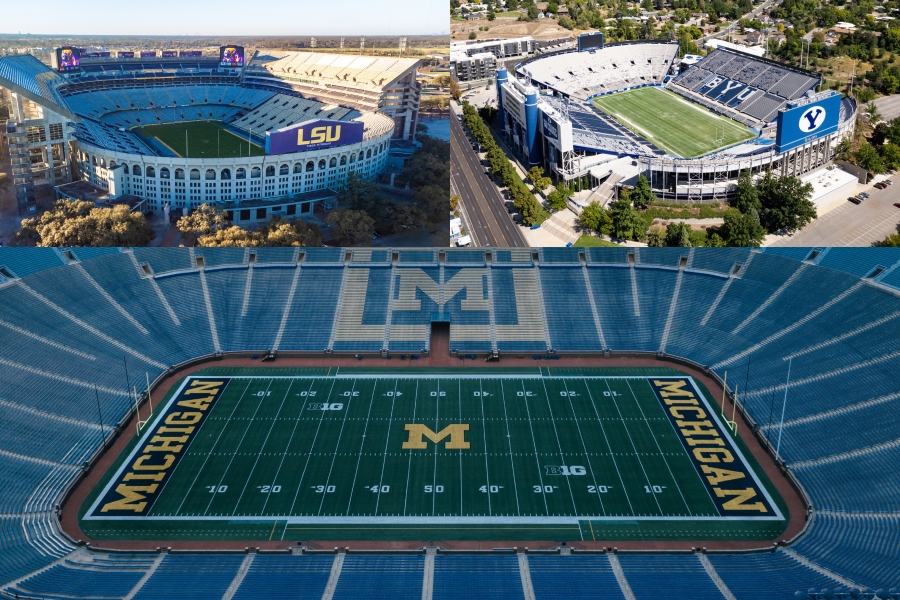The last time you went to the airport, how did you get there? Did you drive yourself and park in a long-term parking lot or in a cold, concrete parking structure? Probably not. More likely you rode with a friend or, as increasingly becoming the case, you used a ridesharing service. According to Statista, almost 100 million people worldwide were forecast to use Uber on a monthly basis in 2018, and that number has risen considerably over the past three years.
According to a report from the National Academy of Sciences in 2016, an increasing number of airports were losing revenue due to the loss of parking fees as the rise of apps like Lyft and Uber bit into what had been a significant source of capital. As Kevin Meikle, director of aviation for the City of Fresno, told the New York Times, “Our parking revenue growth is no longer tracking our passenger growth.”
As a result of these financial pressures, many airports looked toward ridesharing regulations and new fees—ostensibly to make these companies operate like taxi services—to supplement their loss of income. But other airports, such as LAX, have sought a more elegant remedy: repurposing parking garages to become retail centers or housing.
Justin Erbacci, chief innovation and technology officer at LAX, told HP’s Garage that his team had purposefully designed a new parking structure to be easily repurposed for other uses, saying, “We’re making flat floors and higher ceilings.” These ideas are part of his plan to swerve away from the traditional architectural elements of a parking garage such as sloped surfaces, low ceilings (in order to pack in as many cars as possible) and indoor ramps that would make it harder to be redesigned for another income-generating function.
But it’s not just airports that are feeling the crunch of the rise of ridesharing. Cities have also taken a hit from the lost revenue of parking fees and tickets. As ridesharing is more popular in urban areas, it’s been a particularly noticeable blow. As Nik Karalis and James Sanders of the global architecture studio Woods Bagot wrote in the Los Angeles Times, more than 25.4 square miles of the city, an area larger than Manhattan, is devoted exclusively to parking. Karalis and Sanders argue in their piece that by repurposing the huge swathes of land that are dedicated to parking for residential purposes, the city could effectively address its ongoing problems with skyrocketing housing costs. Based on an analysis they performed the authors state, “We found that the LA Basin could accommodate 750,000 new inhabitants if just half its existing parking lots were developed for residential use.” And they conclude that by simply rethinking how we store our vehicles, we could rethink an entire city.
The move away from owning a car in an urban area has opened the door for other innovators like Andy Cohen, co-CEO of the architecture firm Gensler, who is looking to reimagine the gray, concrete parking structure as a place ideally suited to become civic or workspaces. Cohen’s firm designed just such a hypothetical space in Downtown LA using much the same means as Erbacci plans to implement at LAX.
And it doesn’t end at parking structures above ground. In Cincinnati, Gensler designed an office building with a below-ground parking structure that could be seamlessly transformed into more working space. As Cohen explained to Curbed, this doesn’t only make the space potentially more efficient, but also saves builders significant amount of money, “For new buildings the requirements for parking are so great it can be a third of the construction costs.” By avoiding these pricey expenditures, Cohen says, they can focus more on the quality of the floors we live and work in.
It might seem odd to imagine a future where parking garages become malls and offices. But big voices in the architecture industry see this as a trend that’s already upon us. Speaking to the Los Angeles Times, Christopher Leinberger, chairman of the Center for Real Estate & Urban Analysis at George Washington University said, “One of the great changes in the next 20 years is going to be redevelopment of parking garages.” And he may be underestimating that timeline. As Cohen stated plainly in his conversation with Curbed, when asked about the repurposing of parking structures as a result of less people owning cars, “People are always asking, ‘How is this going to happen?’ But it’s already happening.”
Indeed it is.
“Everybody is a different level, everybody is a unique person,” says Wibeck. “How do you make sure that you reach that person best? And you need to talk on the level that person is at. That is the only way. Otherwise, you shoot over their head. And when you leave them nothing has changed.”
“It’s a big responsibility that we have at Skanska,” Wibeck continues. “In Sweden, we are seen as the biggest and everybody looks to us. We have the opportunity to influence and do good things for the entire construction industry here, not just for ourselves.”











